I took Spanish 102 in the Fall Semester of 2021. I learned a lot about Spanish culture, language and daily life.
Interpretive, Interpersonal, and Presentational Modes of Communication
Exploring Culture
Spanish 102 gave me a better understanding of Spanish culture by teaching me more about daily life in its native countries. In chapter six, I read about open air markets and learned the importance to culture and commerce.

I learned that open air markets are an integral part of the spanish speaking world. In some places markets are open daily and others have weekly time frames. This is the one of the main places for natives of these areas, as well as tourists buy fresh fruits, vegetables and seafood, as well as many other products like clothing and gifts. This is very important to the community as a source of supplies and for many, a source of income. In America, it is very rare to see an open market, but it was interesting to learn how common and important they are in other places.
Engaging in Communities
Engaging with others in the community is important. One thing that can make engaging with others difficult is a language barrier. I have worked in several different fields where I have encountered Spanish-speaking people who were not fluent in English. This is one of the main reasons I have been interested in learning Spanish, so that I can communicate with those who are Spanish-speaking. Spanish is the second most common language spoken in America. I am glad to have learned some basic conversational Spanish and look forward to learning more so that I can help bridge the gap in language barriers in the community whenever possible.
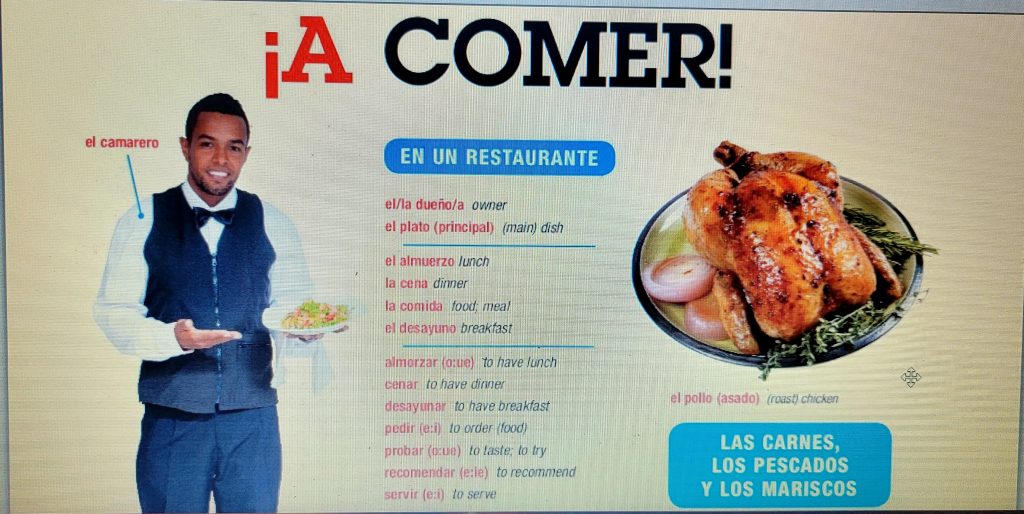
In Chapter 7, we learned how to speak about things relating to food, restaurants, meals, etc. I have always loved food that has roots in Spanish culture. I hope to some day travel to Spanish countries and try authentic meals from different places, with the ability to order in Spanish. On a smaller scale, I am able to do so locally at some restaurants. It is just one small step, but can be a starting point when trying to engage in conversation using Spanish. Once I feel I can articulate everything fluently I want to try going to restaurants with Spanish-speaking waiters and waitresses and speak only Spanish with those I am with. I feel as if the conversational would be minimal enough that I will not need to use English and I will be able to speak to people working in these jobs in their own language. From there I want to continue to learn more so that I can attempt to have some small conversations with Spanish-speaking people in their language and become more fluent and less nervous.
Interpersonal Communication
During Spanish 102, we used several different methods to further our understanding of what we were learning. One of these methods was Talk Abroad. Talk Abroad was a really fun and interesting website that allowed students to speak with a Spanish-speaking person in another country. I spoke with a man from Peru and a man from El Salvador. We discussed our hobbies, interests, daily routines and favorite foods. I was nervous at first, but it was really cool to see what we are able to do with technology and how it can connect people from different parts of the world to learn something new. Another method used was through an app called Voice Thread. These activities involved listening to sentences in Spanish, accompanied by a picture and we had to record ourselves responding in Spanish. This was useful in ensuring that we were able to correctly pronounce the vocabulary words we were learning and that we could not only read Spanish, but hear it and comprehend it as well. The Discussion Board was a tool used for assignments that asked us questions about the content we were learning. We wrote our response, as well as responded to several of our classmates post to initiate a discussion. The last type of assignments were the compositions. In these assignments, we wrote a paragraph about the things we were currently learning. This helped demonstrate our ability to discuss things at some length instead of individual sentences.
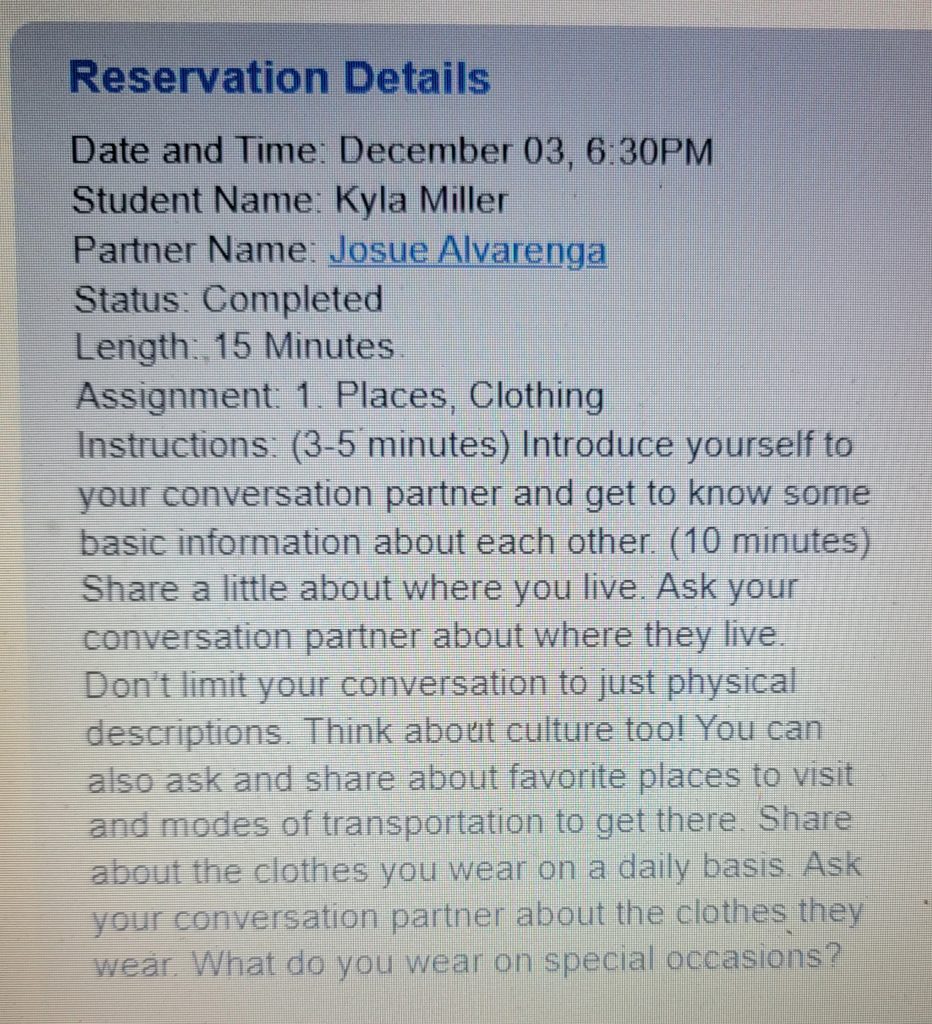
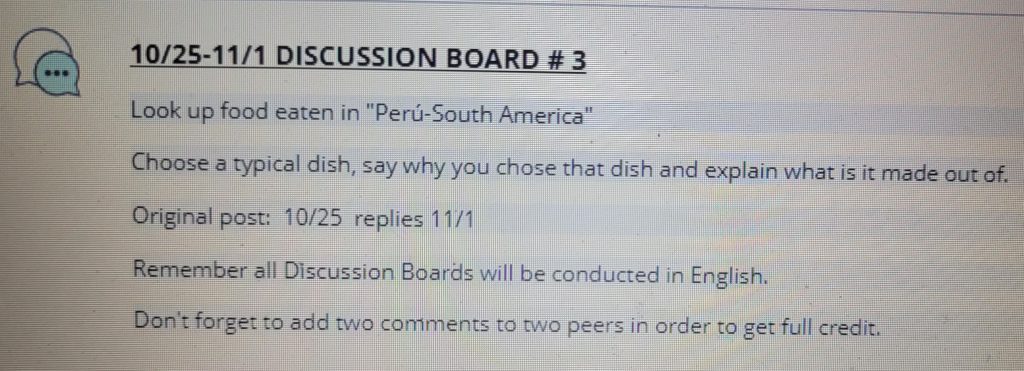

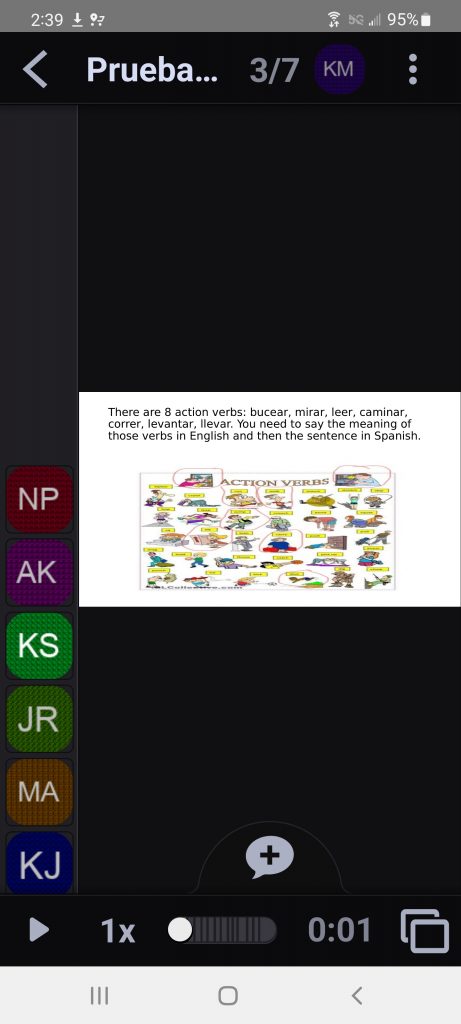
I really enjoyed Talk Abroad. I thought it was useful to put students in a situation where we are unable to use any English and try to have a Spanish only conversation with a person who is also only speaking Spanish. This gave a more authentic experience than practicing alone or with a person who’s first language is Spanish. It pushed me to want to really be able to understand what was being said and articulate what I wanted to say as well. The Voice Threads were useful to make sure I was able to understand spoken Spanish and repeat back a response fluently. I struggled in the beginning, but felt more confident as the assignments went on. The Discussion Boards assignments were a great way to have the students interact and discuss topics with each other and give us a perspective as to what other students were thinking and seeing that maybe we might have overlooked. The compositions challenged me to be able to put together a paragraph of information about a subject instead of individual words and sentences to refer to things. Over all, my favorite assignments were the Talk Abroad ones because it felt like a real Spanish conversation.
Presentational Speaking
Throughout the semester, we were assigned to complete several Voice Thread assignments where we recorded ourselves speaking and also completed live conversations with a partner in our class and partners in other countries through Talk Abroad.
In the beginning, I had some difficulty with the Voice Thread assignments, but felt I did well on the partner conversations. I was able to pronounce the words correctly, but I sometimes mixed up the tenses of the words and I struggled with understanding the spoken Spanish. It was much easier for me to read and speak Spanish than it was to understand someone speaking it. The main thing that I felt made it harder, was the speed. When reading Spanish or speaking it myself, I can go at a much slower pace than someone who is Spanish-speaking. During the voice thread assignments, I was able to slow down the questions to half-speed in order to better understand it. In real life, that is not possible and almost seems rude to ask someone to slow down while speaking. Throughout the semester, I have tried to challenge myself more and more to comprehend it at a normal pace. The Talk Abroad assignment was intimidating at first, but I feel like my conversation definitely went smoother the second time because I was more prepared.
Presentational Writing
Throughout the semester, we have done several compositions. These are assignments in which we write a paragraph in Spanish discussing what we are currently learning.

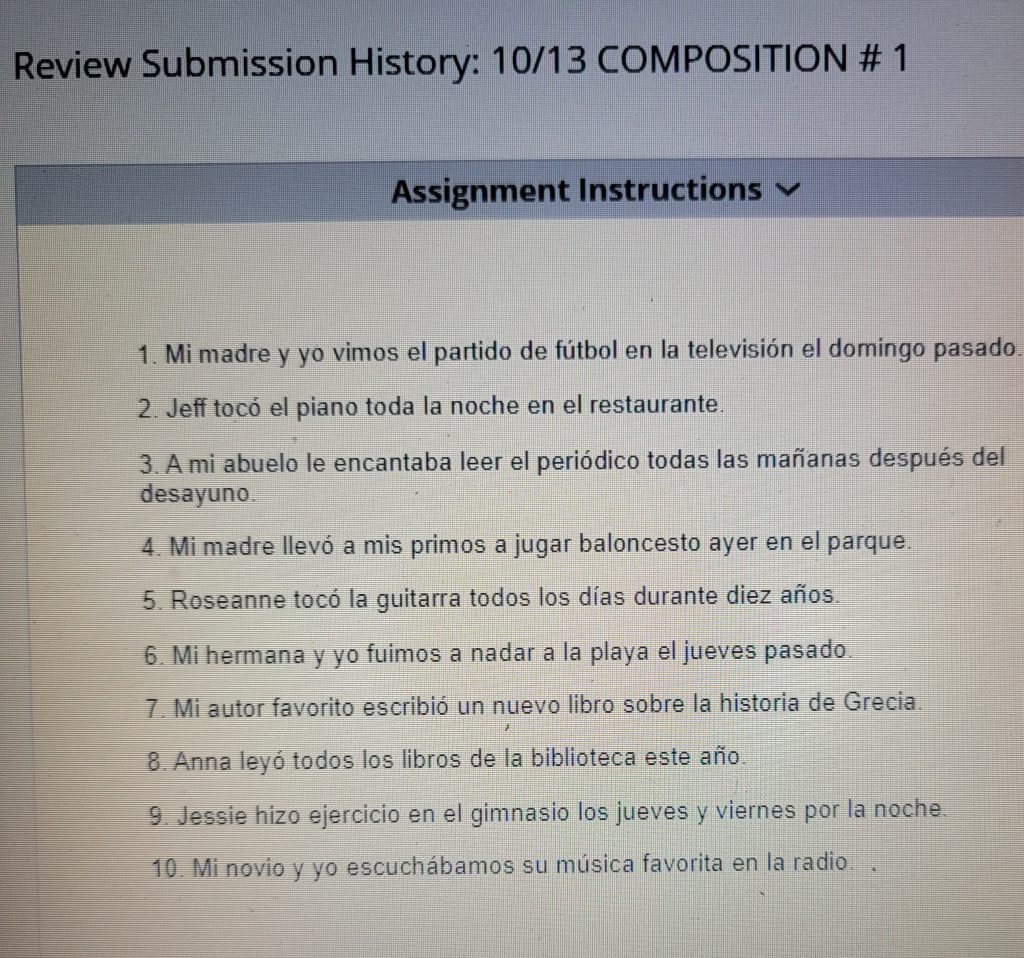
I enjoyed doing the compositions and felt as if I did well with them. These assignments challenged us to explain topics in depth. We would spend some time learning vocabulary words, putting them together to make sentences, and at the end of the topics, we would use what we had learned to form a paragraph about it based on a series of questions and prompts. I feel as if these assignments really benefited me in gaining a better understanding of what I learned.
Interpretive Listening
In Spanish 102, we learned to interpret Spanish through listening in our Voice Thread assignments, through Talk Abroad and through assignments in our weekly video quizzes and worksheets.
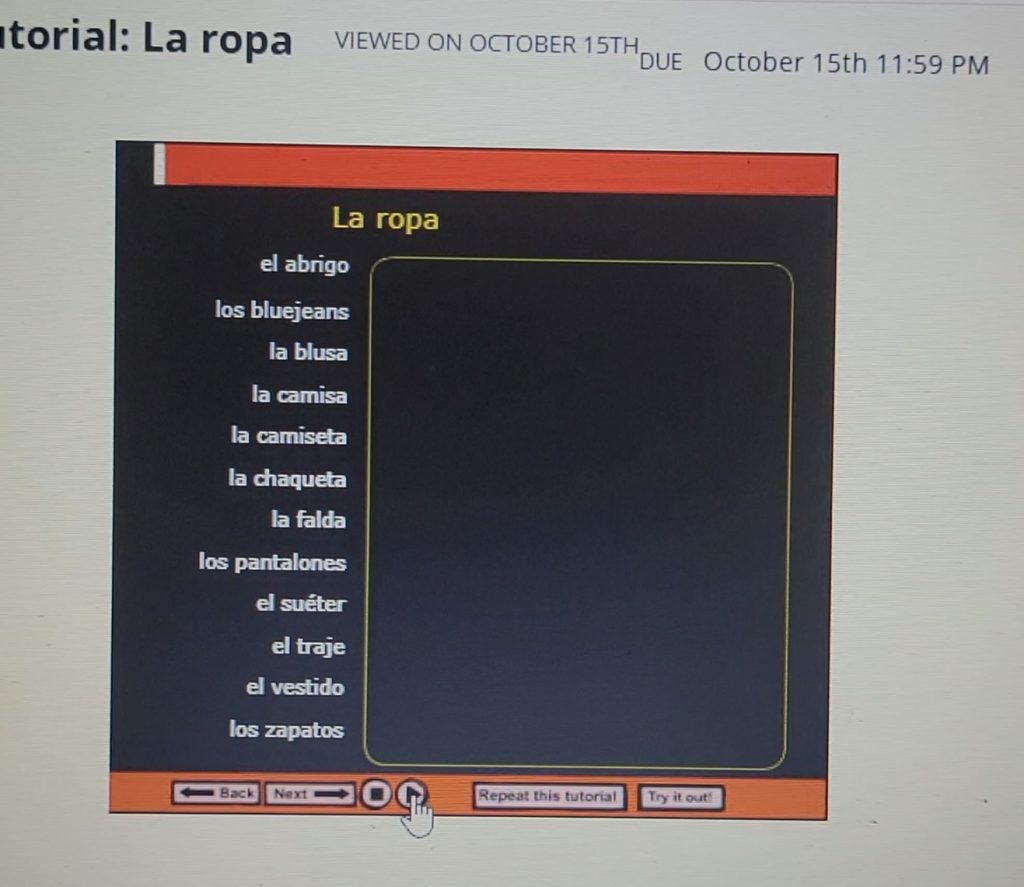
Learning a language happens in multiple ways. A person must be able to read, speak and hear and understand a language to become fluent in it. For me, it has always been easier to read and pronounce Spanish, than it is to hear and understand. The main reason is that Spanish-speaking people usually speak pretty fast and that can be hard to keep up with as a beginner. Doing assignments where I had to respond based on what I was able to hear and interpret was a challenge that helped me better understand spoken Spanish. Throughout our weekly assignments, we often had parts that had us listen to a paragraph and answer several questions based on what we learned. This was really useful in reinforcing the knowledge of the words we learned without being able to read them.
Interpretive Reading
Much of what was written in the virtual textbook was written in Spanish. Many of our assignments and parts of our exams were written in Spanish only for us to interpret and respond to.
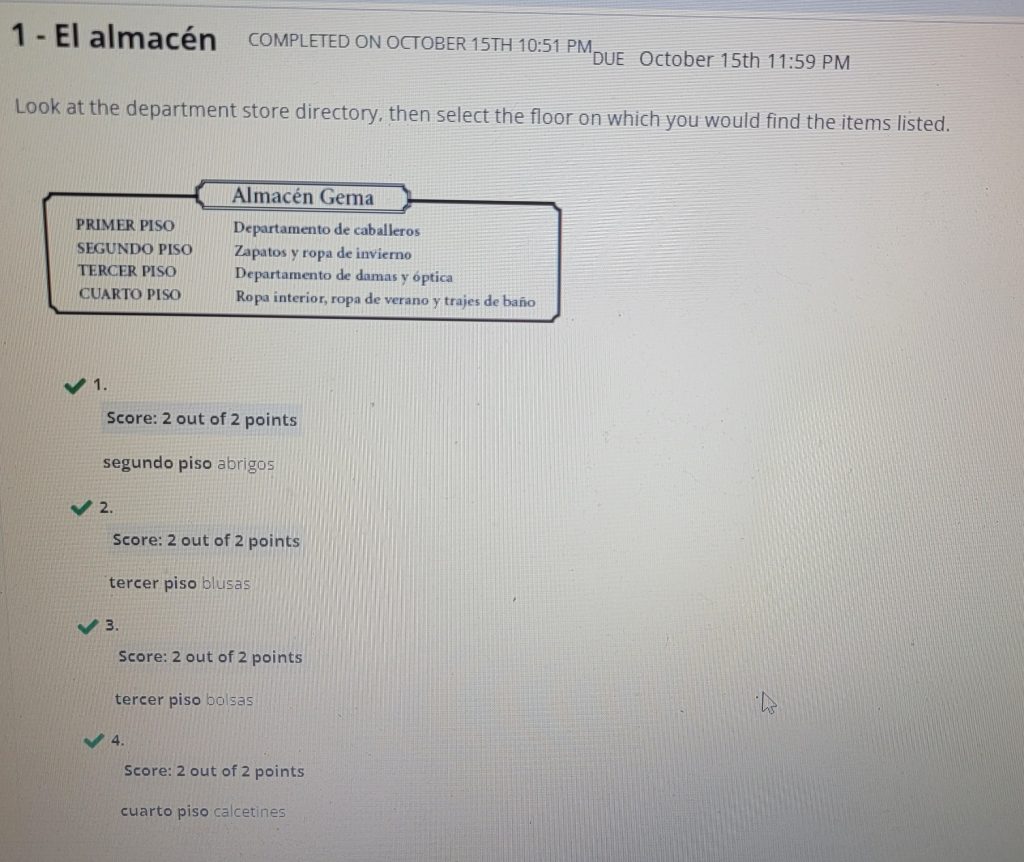
Assignments or parts of text that were Spanish only definitely posed some challenges to be able to translate what was being expressed. Some of our questions within assignments were written in Spanish. This made it crucial for me to be able to know what was being said so that I could properly respond. In some instances, we just had to fill in a missing word, but in other cases we had to translate a paragraph of text and respond to questions about it. This was useful in making sure we knew more than just the individual words, but that we could also understand what is trying to be conveyed when in paragraph form.

